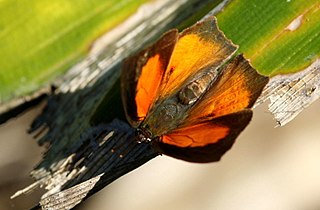
Curetis acuta, the angled sunbeam, is a species of butterfly belonging to the lycaenid family. It is found in Indomalayan realm. Curetis acuta is sexually dimorphic, the sexes differing in dorsal coloration of the wings, however their ventral wings are similar and of silver color which reflects sunlight. The reflection of light by silver ventral wings plays a role of signalling during flight, camouflage while at rest or during hibernation, and lowering body temperatures by reflecting the sunlight.

Lichenaula calligrapha is a species of moth of the family Xyloryctidae. It is known from rainforests from northern Queensland to Victoria, although it has also been recorded from the Australian Capital Territory, New South Wales and Tasmania.
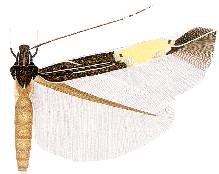
Cosmopterix argentifera is a moth of the family Cosmopterigidae. It is known from Jamaica.

Cosmopterix chisosensis is a moth of the family Cosmopterigidae. It is known from Argentina and the United States.

Cosmopterix gemmiferella is a moth of the family Cosmopterigidae. It is known from the United States and Canada (Ontario).
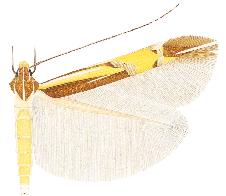
Cosmopterix madeleinae is a moth of the family Cosmopterigidae. It is known from the Galapagos Islands.
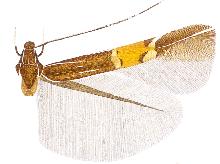
Cosmopterix ochleria is a moth of the family Cosmopterigidae. It is known from Tabasco, Mexico.
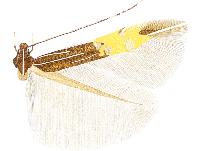
Cosmopterix opulenta is a moth of the family Cosmopterigidae. It is known from the United States and Costa Rica.

Cosmopterix orthosie is a moth of the family Cosmopterigidae. It is known from Minas Gerais, Brazil.

Pebobs ipomoeae is a moth of the family Cosmopterigidae. It is known from Florida.
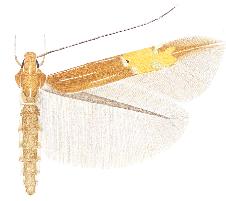
Pebobs sanctivincenti is a moth of the family Cosmopterigidae. It is known from Grenada and Saint Vincent and the Grenadines.
Agdistopis sinhala is a moth of the family Macropiratidae. It is found in south-east Asia, including Sri Lanka, India, Japan and Taiwan.

Battaristis concinusella is a species of moth in the family Gelechiidae. It is found in North America, including California, Delaware, Illinois, Maryland, Minnesota, North Dakota, Ohio, Ontario, Quebec, South Carolina and West Virginia.
Helcystogramma juventellus is a moth in the family Gelechiidae. It was described by Thomas de Grey, 6th Baron Walsingham, in 1897. It is found in Jamaica and Mexico (Tabasco).
Gnorimoschema lipatiella is a moth in the family Gelechiidae. It was described by August Busck in 1909. It is found in North America, where it has been recorded from Colorado.
Battaristis symphora is a moth of the family Gelechiidae. It was described by Thomas de Grey, 6th Baron Walsingham, in 1911. It is found in Mexico (Tabasco).
Isophrictis canicostella is a moth of the family Gelechiidae. It was described by Thomas de Grey, 6th Baron Walsingham, in 1888. It is found in North America, where it has been recorded from California and Colorado.
Chrysoesthia lingulacella, the silver-banded moth, is a moth of the family Gelechiidae. It was described by James Brackenridge Clemens in 1860. It is found in North America, where it has been recorded from Alberta, Arizona, California, Illinois, Indiana, Iowa, Maine, New Hampshire, Quebec and Texas.
Polyhymno colleta is a moth of the family Gelechiidae. It was described by Walsingham in 1911. It is found in Mexico (Guerrero).
Psittacastis championella is a moth in the family Depressariidae. It was described by Lord Walsingham in 1912. It is found in Guatemala.


